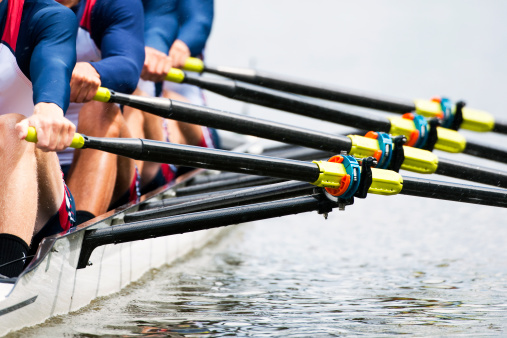General Rules of Ocean Rowing
Imagine being in the middle of the Atlantic Ocean, rowing solo towards the Caribbean with only your determination propelling you forward. As an ocean rower, you must adhere to strict protocols to confirm your safety and success. From equipment checks to communication procedures, each aspect plays a vital role in your journey. Understanding these general rules is not just essential for your well-being but can also make the difference between a smooth voyage and a disastrous one.
Safety Measures
When starting on an ocean rowing journey, it is important to meticulously adhere to safety measures to guarantee a secure and successful voyage. Safety drills play a critical role in preparing rowers for emergency situations that may arise during the expedition. Conducting regular safety drills guarantees that all team members are well-versed in the necessary procedures to handle emergencies effectively. These drills should encompass a wide range of scenarios, including man overboard situations, capsizing, medical emergencies, and equipment failures.
Emergency response protocols must be established and clearly communicated to all crew members before setting off on the journey. Each rower should know their specific roles and responsibilities in the event of an emergency. Designated leaders should oversee the implementation of emergency procedures and coordinate the response efforts. It is essential to practice these protocols through realistic simulations to enhance the crew's preparedness for challenging situations.
Moreover, having a well-equipped emergency kit onboard is crucial for addressing medical emergencies and equipment failures promptly. The kit should include essential medical supplies, tools for repairing equipment, emergency communication devices, and provisions for survival situations. Regularly inspecting and replenishing the emergency kit is necessary to ensure its effectiveness when needed. By prioritizing safety drills and emergency response preparedness, ocean rowers can navigate the challenges of the open sea with confidence and resilience.
Equipment Requirements
When starting on an ocean rowing journey, it is vital to carefully follow the Essential Gear Checklist and adhere to Safety Equipment Standards. Ensuring that your equipment meets the necessary specifications is paramount for your safety and the success of your expedition. The quality and functionality of your gear can greatly impact your experience at sea.
Essential Gear Checklist
What essential gear must be included in your ocean rowing equipment checklist to guarantee safety and preparedness on your journey? Make sure your ocean rowing adventure is equipped with the following items:
- Emergency provisions: Pack ample food and water supplies to sustain you in case of unforeseen delays or emergencies.
- Survival skills: Acquire essential knowledge on survival techniques, navigation, and first aid to handle challenging situations effectively.
- Communication devices: Carry reliable communication equipment such as a VHF radio or satellite phone for emergency calls.
- Personal flotation device (PFD): Wear a suitable PFD at all times to make sure personal safety and compliance with regulations.
Safety Equipment Standards
To guarantee compliance with safety regulations and enhance preparedness for your ocean rowing expedition, a specific set of safety equipment standards must be met. It is essential to conduct regular safety drills and familiarize yourself with emergency procedures. Additionally, proper equipment maintenance and repair techniques are vital to make sure everything functions correctly when needed. Below is a table outlining the necessary safety equipment for your ocean rowing adventure:
| Safety Equipment | Description |
|---|---|
| Personal Flotation Device (PFD) | Ensures buoyancy in case of emergency |
| EPIRB (Emergency Position Indicating Radio Beacon) | Signals distress and location to authorities |
| First Aid Kit | Treats minor injuries and medical emergencies |
| VHF Radio | Communication with other vessels and emergency services |
Navigation Protocols
When sailing the vast expanse of the ocean, understanding route planning essentials is essential for a successful journey. Utilizing advanced technology like GPS systems can greatly aid in determining your position and charting the most efficient course. However, rowers must also be prepared to face various navigational challenges such as unpredictable weather patterns and potential equipment malfunctions.
Route Planning Essentials
Understanding navigational protocols is essential for successful route planning in ocean rowing expeditions. When preparing for your journey, consider the following important aspects:
- Chart Analysis: Study nautical charts thoroughly to identify currents, wind patterns, and potential hazards along your route.
- Waypoint Selection: Strategically mark waypoints to guide your course and track progress effectively.
- Weather Monitoring: Regularly monitor weather forecasts to adapt your route and make safety during changing conditions.
- Emergency Protocols: Establish clear protocols for handling emergencies, including communication procedures and contingency plans.
Use of Technology
In ocean rowing expeditions, integrating advanced technological tools into navigation protocols enhances route planning efficiency and safety. When considering technology, it's important to optimize battery usage. Utilize energy-efficient devices to guarantee continuous access to essential navigation systems. Efficient battery management is key to sustaining communication and data tracking throughout your journey. Data tracking plays a critical role in monitoring your progress, analyzing weather patterns, and making informed decisions. Utilize GPS trackers, satellite communication devices, and onboard computers to collect and analyze data effectively. By incorporating these technological advancements into your navigation protocols, you can enhance your overall rowing experience and ensure a safer and more efficient journey across the vast ocean.
Navigational Challenges
To navigate the complex challenges of ocean rowing, meticulous adherence to navigation protocols is essential for ensuring safe and efficient progress across the vast expanses of the open sea.
- Tidal currents: Understanding the impact of tidal currents on your route is important for effective navigation.
- Weather patterns: Monitoring weather patterns can help you anticipate storms and adjust your course accordingly.
- Celestial navigation: Utilizing celestial bodies like the sun and stars for navigation requires precision and expertise.
- Magnetic compasses: Regular calibration and usage of magnetic compasses are essential for maintaining the correct heading.
Rowing Techniques
Efficient rowing techniques are crucial for maximizing speed and endurance during ocean rowing expeditions. Proper technique guarantees that you are utilizing your energy effectively, allowing you to cover more distance with less effort. Mastering the art of efficient strokes will not only enhance your performance but also reduce the risk of injuries.
To illustrate the importance of proper rowing technique, let's consider the following table:
| Common Mistakes | Correct Technique |
|---|---|
| Gripping the oar too tightly | Maintain a relaxed grip on the oar |
| Leaning too far back during the stroke | Keep your back straight and engage your core |
| Using only your arms to row | Utilize your legs, back, and arms in a coordinated motion |
| Rowing at a high cadence with no power | Focus on strong, deliberate strokes with each pull |
Weather Monitoring
Monitoring weather conditions is essential for ensuring the safety and success of ocean rowing expeditions. To achieve this, you must utilize sophisticated monitoring systems and conduct thorough data analysis. Here are some key points to to consider:
- Monitoring Systems: Invest in reliable weather monitoring systems that can provide real-time data on wind speed, direction, barometric pressure, and temperature. These systems can help you anticipate changes in weather patterns and make informed decisions accordingly.
- Data Analysis: Utilize advanced data analysis techniques to interpret the information gathered from your monitoring systems. Look for trends, anomalies, and correlations that could impact your rowing journey. By analyzing this data effectively, you can better prepare for any upcoming weather challenges.
- Forecasting Accuracy: Pay close attention to the accuracy of weather forecasts specific to your route. Choose reputable forecasting sources and cross-reference information to ensure reliability. Accurate forecasts are crucial for planning your rowing schedule and avoiding unexpected weather disturbances.
- Sea Conditions: Weather monitoring should also encompass monitoring sea conditions such as wave height, swell direction, and currents. Understanding how weather influences sea conditions is essential for navigating safely and efficiently during your ocean rowing expedition.
Communication Procedures
Effective communication procedures are essential for maintaining contact and ensuring safety during ocean rowing expeditions. When out at sea, it is critical to have reliable methods to communicate distress signals or call for emergency assistance. One of the primary tools for communication in emergencies is the use of signal flares. These bright pyrotechnic lights can be seen from a distance, alerting nearby vessels or rescue teams to your location. It is important to have signal flares readily accessible and to know how to use them correctly in case of an emergency.
In addition to visual signals like flares, radio communication plays a significant role in keeping in touch with support teams or other rowers. Radios allow for real-time communication, which can be invaluable during challenging situations. Make sure to have a working radio onboard and know the appropriate channels to reach out for help if needed. Understanding distress signals and knowing how to transmit them effectively is critical for a swift response in case of an emergency.
Waste Management
Proper waste disposal and management are essential aspects to take into account when preparing for an ocean rowing expedition. Ensuring eco-friendly practices and pollution prevention measures are in place can greatly impact the environmental footprint of your journey. Here are some key considerations for waste management while at sea:
- Waste Disposal Methods: Implement proper waste segregation practices onboard to separate recyclable materials from general waste. Utilize designated bins or storage areas to manage different types of waste effectively.
- Recycling on Board: Set up a recycling system on your vessel to process materials like plastic, metal, and paper. Compact recyclables to save space and consider creative ways to reuse items whenever possible.
- Eco-Friendly Practices: Embrace sustainable habits such as using biodegradable products, minimizing single-use plastics, and opting for reusable containers. Choose environmentally friendly cleaning agents to reduce chemical pollution.
- Pollution Prevention: Avoid littering or disposing of waste overboard. Store hazardous materials securely and dispose of them properly when reaching shore. Monitor fuel and oil usage to prevent accidental spills that can harm marine life.
Frequently Asked Questions
Can Ocean Rowers Bring Pets or Animals on Their Journey?
While ocean rowers long for companionship, bringing pets on journeys poses safety risks and logistical challenges. Considerations like pet policies, food supplies, and emergency plans must align. Sadly, the vast ocean isn't always pet-friendly.
How Do Ocean Rowers Handle Medical Emergencies or Injuries While at Sea?
In case of medical emergencies at sea, ocean rowers handle them by following emergency protocols and administering first aid using onboard medical supplies. Safety procedures are vital to guarantee proper care and response.
Are There Restrictions on the Type of Food or Beverages That Ocean Rowers Can Bring on Their Journey?
You can freely choose food, but beware of the ocean's fickle appetite. Opt for nutrient-dense, non-perishable options. Hydrate wisely; salty sea air demands ample water. Balance taste and sustenance for a successful voyage.
Do Ocean Rowers Encounter Any Unique Challenges or Obstacles When Rowing at Night?
When rowing at night, ocean rowers face unique challenges. Sleep deprivation can impair decision-making and coordination, impacting safety. Navigation becomes trickier due to reduced visibility. Adhering to safety protocols and maintaining alertness are vital.
How Do Ocean Rowers Handle Encounters With Marine Wildlife Such as Sharks or Whales During Their Journey?
When handling marine wildlife encounters, prioritize safety. Implement navigation techniques and strategies for peaceful coexistence. Remain vigilant and informed. Your journey's success relies on respecting their habitat and understanding their behavior.






